Concept art is the starting point where ideas become reality, and concept artists are responsible for the fundamental creation of a wide range of ideas, from tiny props and accessories to full characters and large environment concepts.
“As concept artists, we help modelers, visual effects (VFX) teams and animators in our global studios visualize art project ideas to be developed for production,” shared Jessica Taylor, one of our artists at Virtuos Montreal.

Jessica Taylor, Concept Artist, Virtuos Montreal
Working as a Concept Artist in Virtuos Montreal
Like many artists at Virtuos, Jessica shared that her love for drawing bloomed at a young age and has since sustained till today. As a concept artist with an academic background in graphic design and architecture, Jessica revealed that she made the switch to concept art. She wanted to find a way to combine what she learned in university and her interest to draw characters and experiment with fun ideas.
At Virtuos Montreal, Jessica works on both environment and character concept art. “It’s refreshing to work on both, as it allows me to be consistently engaged in the projects I’m working on, instead of feeling burnt out from doing strictly only one type of work. Also, it’s fun getting to work on both environment and character work and grow my skills in both aspects.” She added that the content she learned in graphic design and architecture has been very applicable to her profession as a concept artist, especially in being able to take an idea and apply it consistently throughout a design.
Personal Concept Art Sketches and Projects
“As a concept artist, it’s important to keep an open mind and learn to appreciate different styles that other artists have.”
“It’s also a good practice to draw outside of work and do some exploring on your own – just a couple of sketches a week or a few doodles here and there helps,” Jessica advised.
To improve her skills and experiment with different styles, Jessica consistently works on personal projects in her free time, some of which can be found on her ArtStation profile:
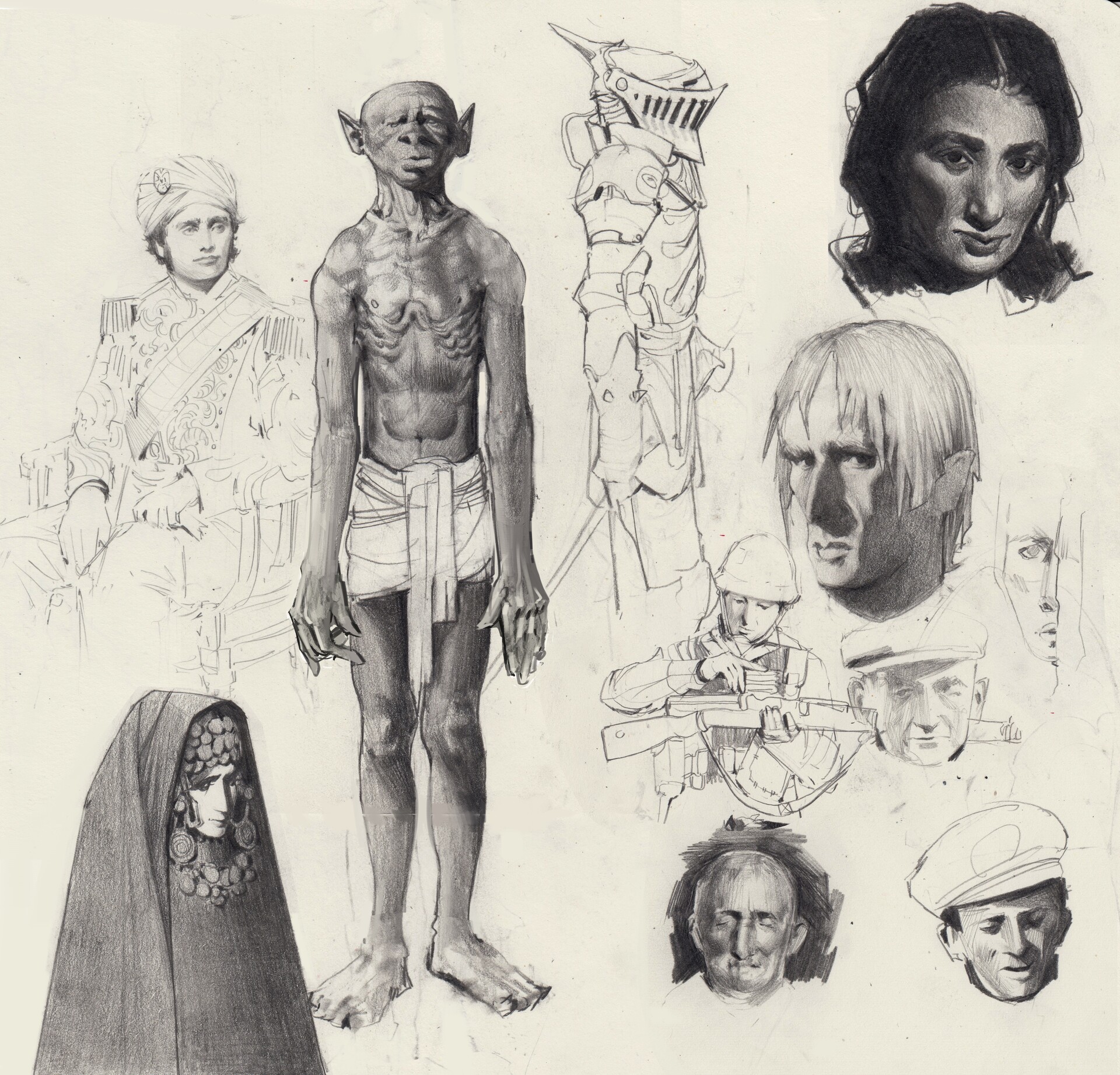
Image courtesy of Jessica Taylor
Besides sharing her sketches and projects, Jessica also occasionally uploads video tutorials for her art content on social media. Check out one of her YouTube videos here:
Drawing a Concept Art Piece from Scratch
During our interview with Jessica, we delved into two of her personal projects on ArtStation. We learned how she came up with the ideas and developed them into complete, original creations.
1. Creating Concept Art Using Real-life References: Bridge Between the Two Roots
Showing us one of her personal works, Jessica shared that the outdoors is a great place to garner ideas and inspiration for environment-themed concept art projects.

Bridge Between the Two Rocks
Jessica revealed that the piece above named “Bridge Between the Two Roots” was based on a moss-covered branch that she found just outside her house.
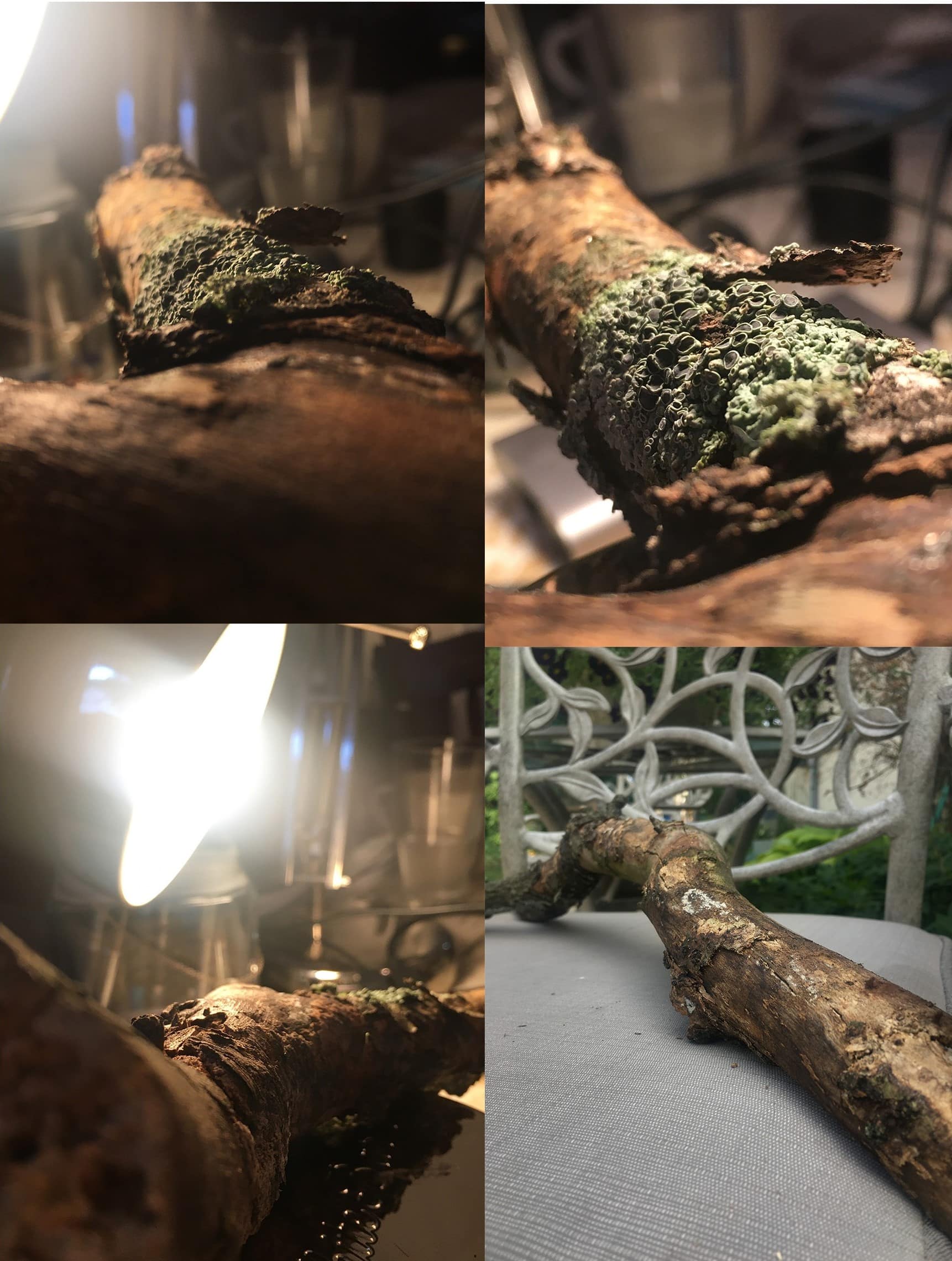
The branch found outside Jessica’s house
“I started with reference photos that I took of the stick. I particularly liked the moss and fungi growing on the branch,” she added.
After gathering reference material, she began with a simple sketch and outlined the idea behind the piece.
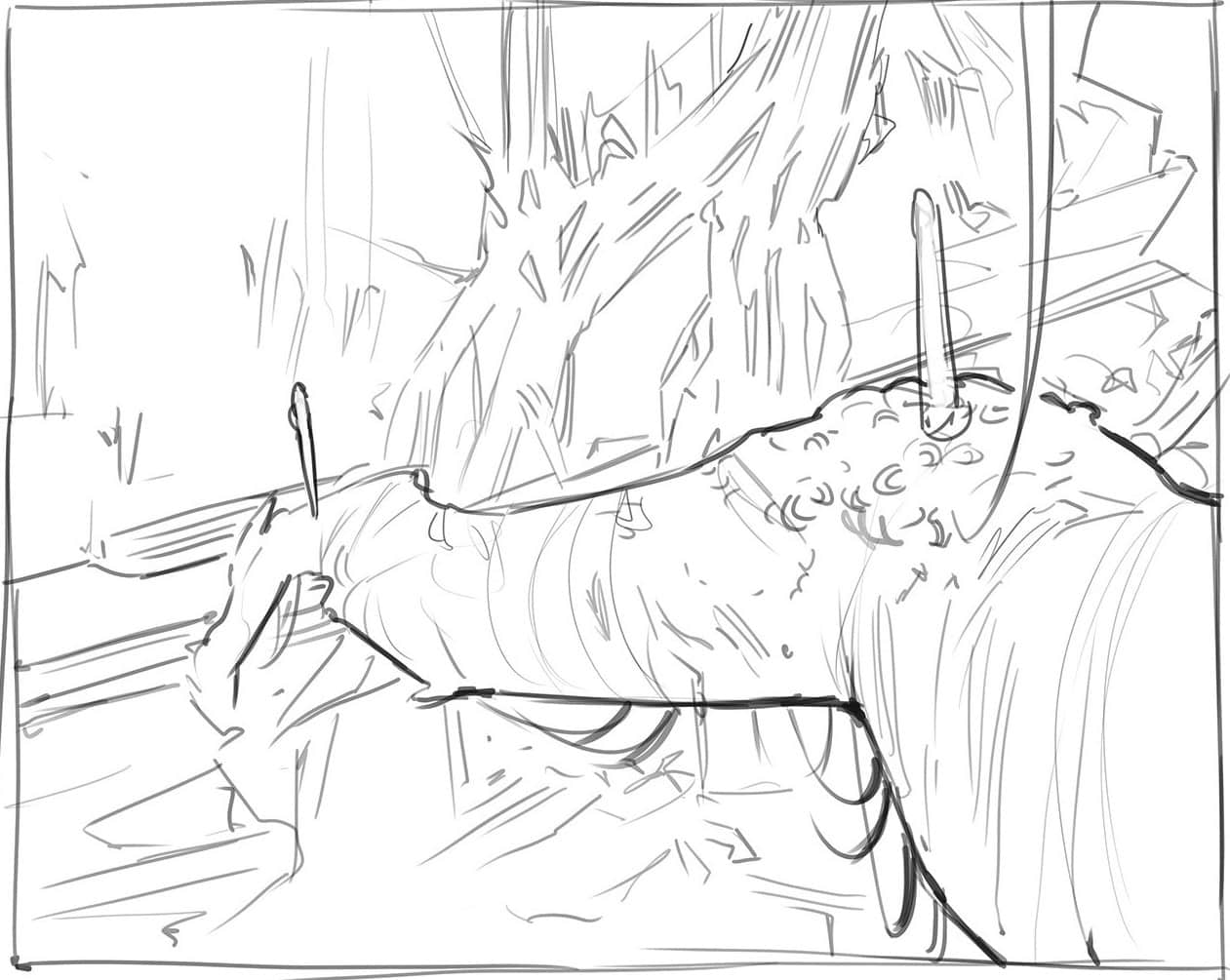
Step 1: A simple sketch/outline
Next, she added values to the sketch to create dark and light contrasts in the details and later coloring.
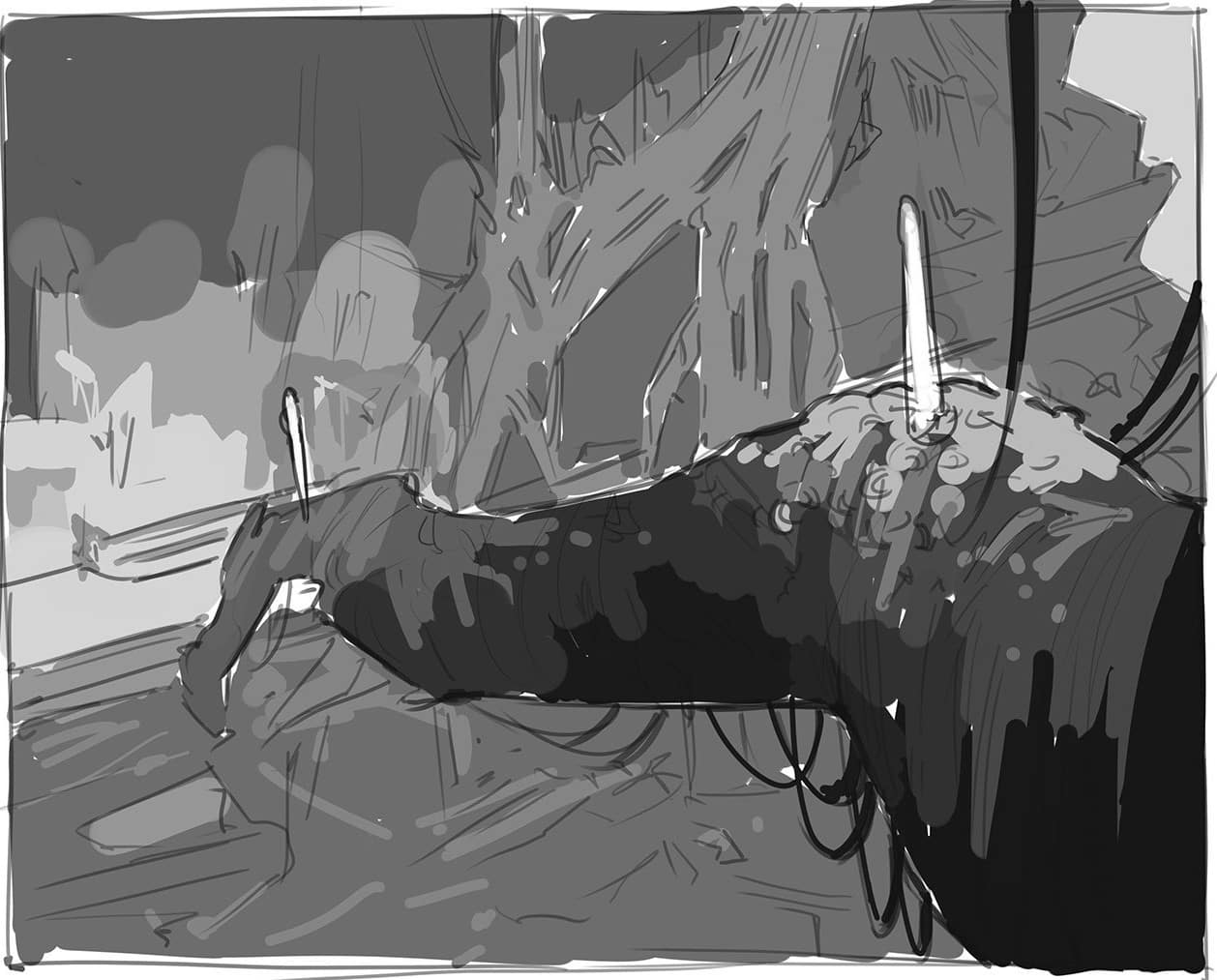
Step 2: Adding values
Afterwards, Jessica overlayed the photos of the branch onto the value sketch (as shown in Step 2) and started building the details on Photoshop, creating a realistic yet mystical look.
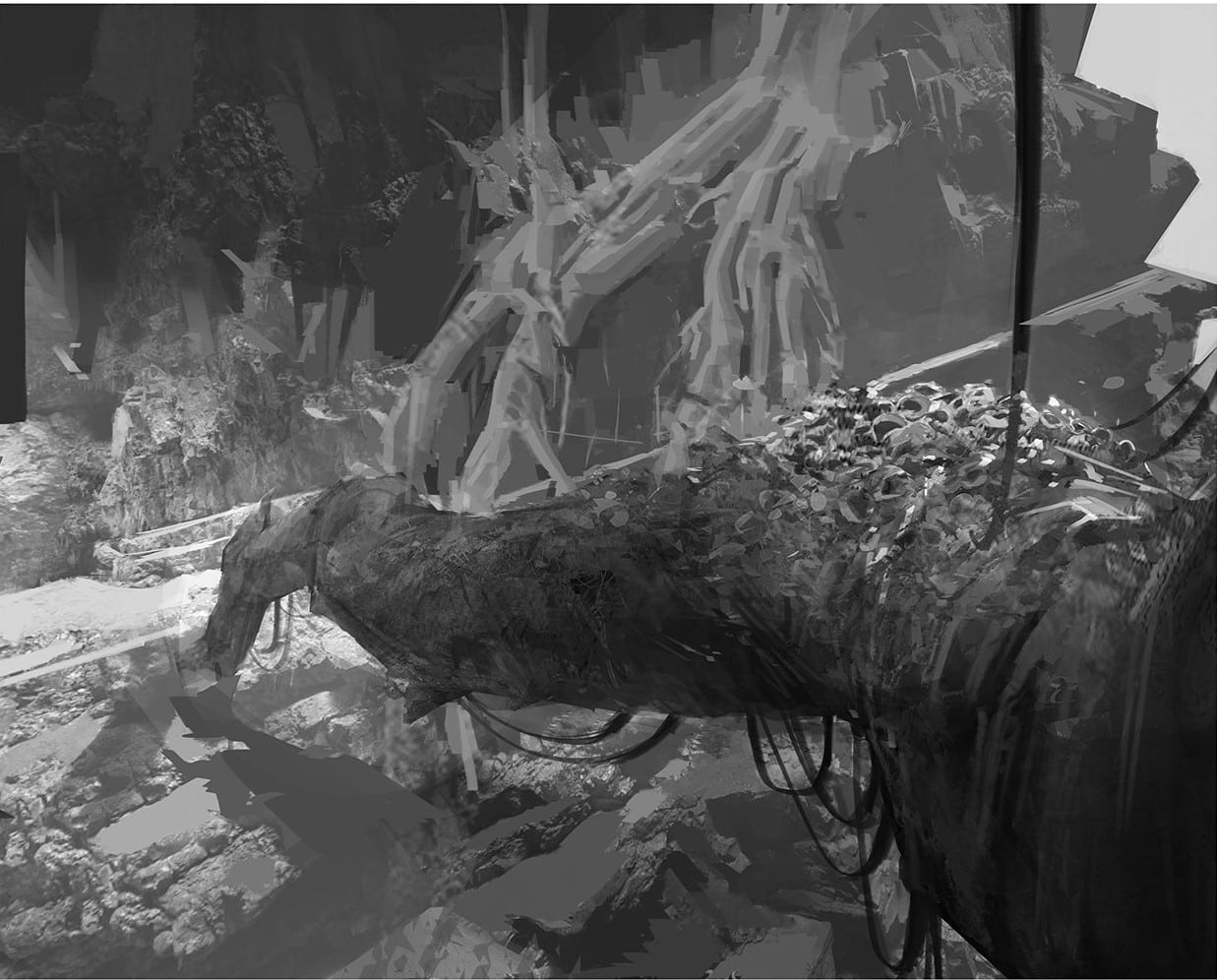
Step 3: Building Details on Photoshop
After the initial details had been filled in, Jessica chose the color palette after preparing both a warm and cool option with eight shades each. “After adding the colors, I could really see the sketch coming together. I went with the warmer shade in the end as the cooler palette seemed a bit stale to me, so it was just a matter of personal preference,” she shared.

Step 4: Coloring
After adding the colors, she continued to add more detail and touch-ups before finally completing “Bridge Between the Two Rocks”.

Completed “Bridge Between the Two Rocks”
“This particular sketch was a very fruitful exercise in creating something new by combining my ideas with real-life references,” said Jessica.
2. Creating Concept Art Out of a Story: Floating Quarry Isle
Besides collecting ideas from physical environments and items, Jessica shared that she enjoys drawing ideas from fictional stories and her imagination. She experimented with creating an ethereal “floating quarry isle” in a personal challenge she set for herself.
In the concept narrative that Jessica developed, a young knight on an adventure has been tasked with a mission to forge a sword out of a special stone found on a floating quarry in the middle of the ocean to carry on with his adventure.
For the idea to work, Jessica shared that it was essential to plan and research thoroughly:
- How would the knight be able to travel to the quarry?
- How would he get onto the floating quarry?
- How would he forge the sword after collecting the materials?
While researching, Jessica drew references from outdoor adventure activities such as rock climbing to enrich her ideas, adding climbing cables and suspended ladders on the floating quarries which the knight could interact with.
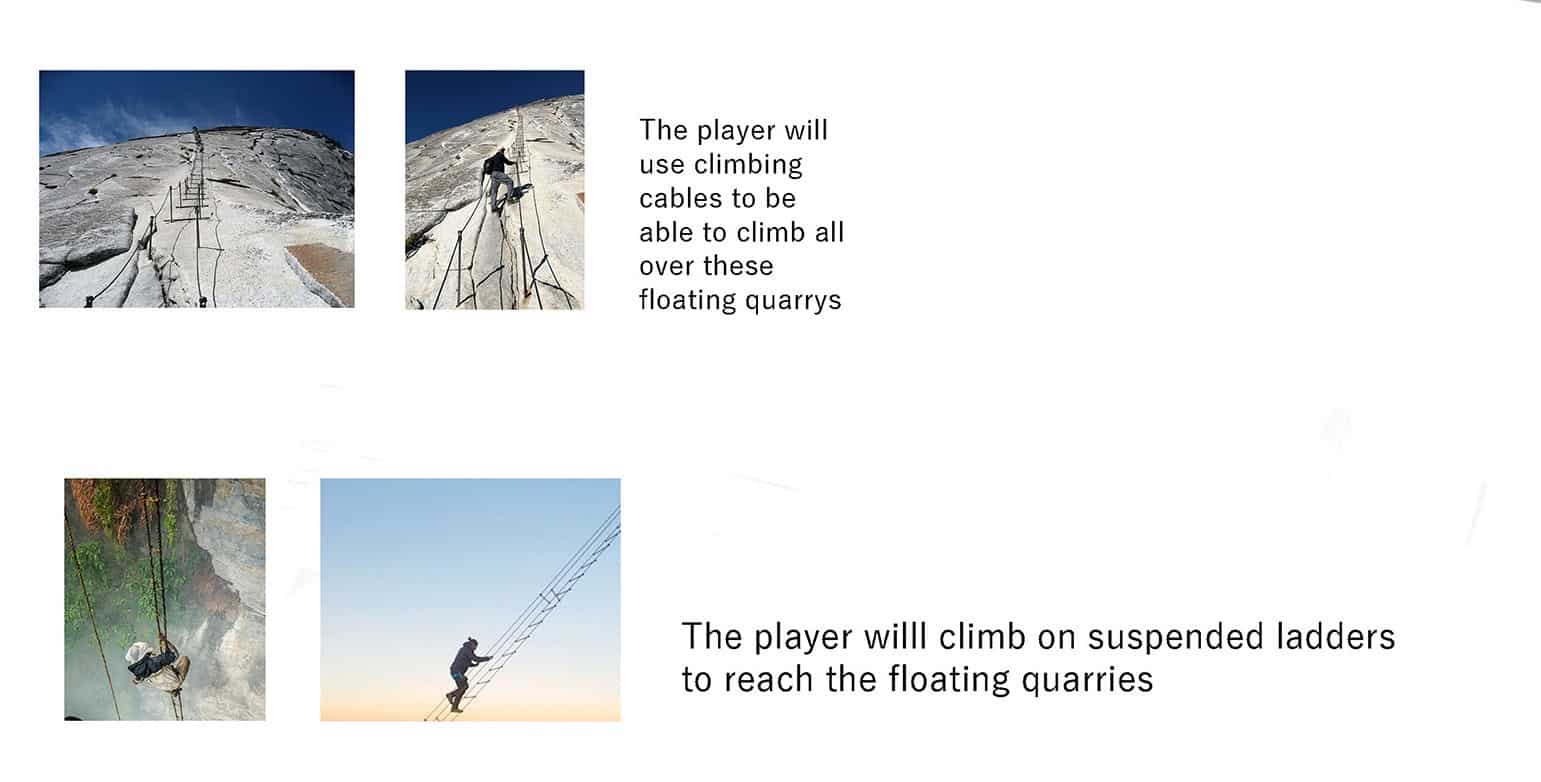
Research material for the floating quarry isle
Jessica started her concept sketch with a rough outline of the floating quarry isle, forming a base island with a dock for sailboats and a cluster of cuboid rocks floating above it.
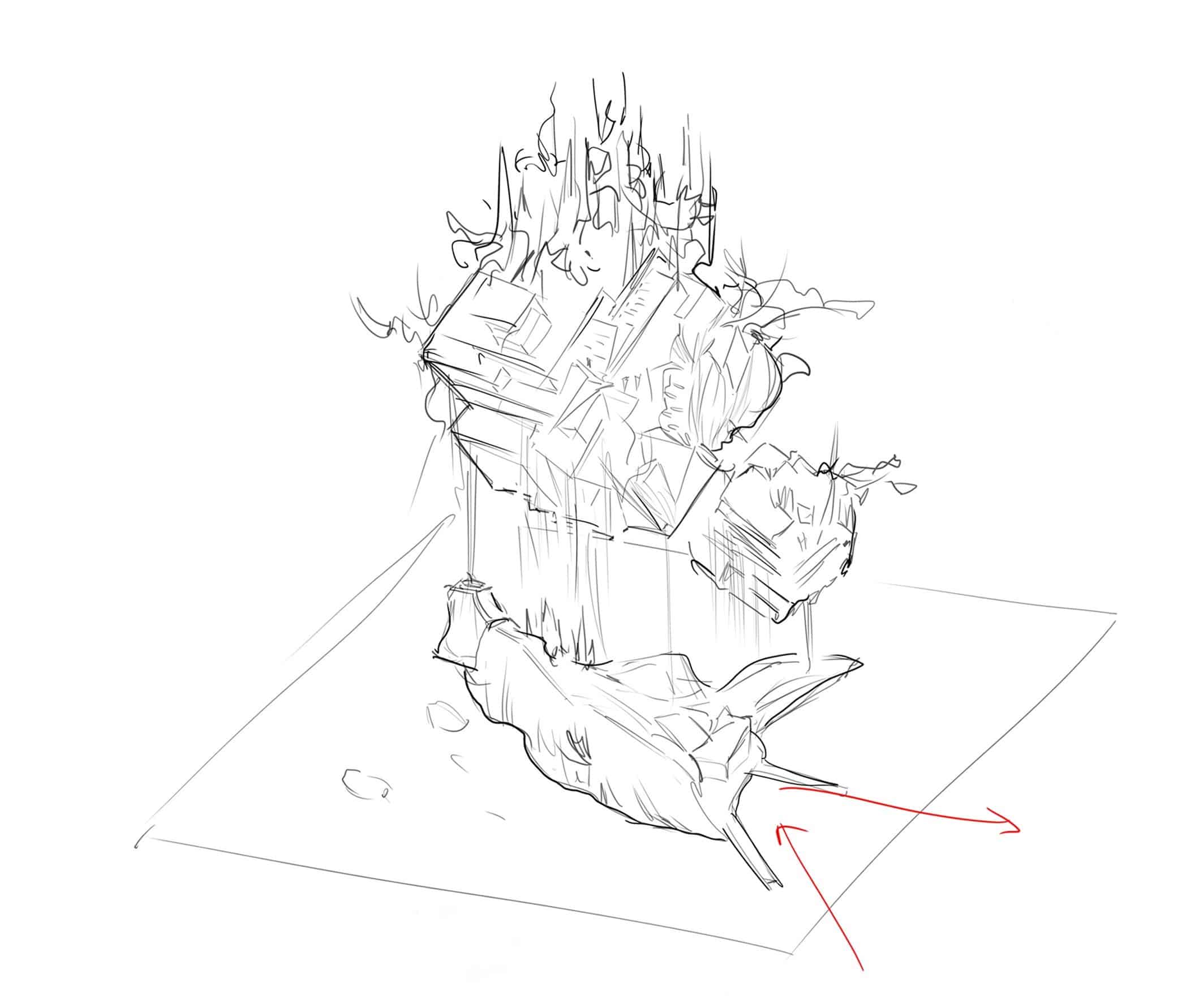
Ideation and sketching
To find the ideal combination that fit the narrative of her story, she crafted multiple sketches to test and experiment with.

Concept Sketches by Jessica
After testing with multiple sketches and filling in the details, Jessica shared her final design of her floating quarry isle:

Final look of the Floating Quarry Isle
In the final design, Jessica detailed the setting and narrative of the knight’s adventure at the floating quarry isle from start to end:
- First, the young knight takes a sailboat and arrives at the island’s dock.
- The knight finds a blacksmith/stonemason living on the island. After listening to the knight’s request, he instructs the knight to make his way to the peninsula, where he will find a suspended ladder that leads to the first floating quarry where the first stone can be found.
- The knight embarks on his mission to collect the various stones on the floating quarries, climbing up the ladder to ascend to the first floating quarry.
- At the first floating quarry, the knight begins to rock climb across the tricky terrain to obtain the materials he needs.
- After collecting the first stone, the knight crosses a floating bridge to arrive at the second floating quarry, where he finds the rest of the materials he needs.
- Once he’s done collecting his stones, the knight makes his way down from the second quarry using another suspended ladder.
- He arrives on an intermediary floating rock on his way down, where he can take a short break.
- The knight then lands in a valley formed by two large, sharp stones jutting out of the island. He makes his way further down the cliffs via steps, back to the blacksmith/stonemason’s shop, where he hands in the materials to forge the sword and completes his mission successfully.
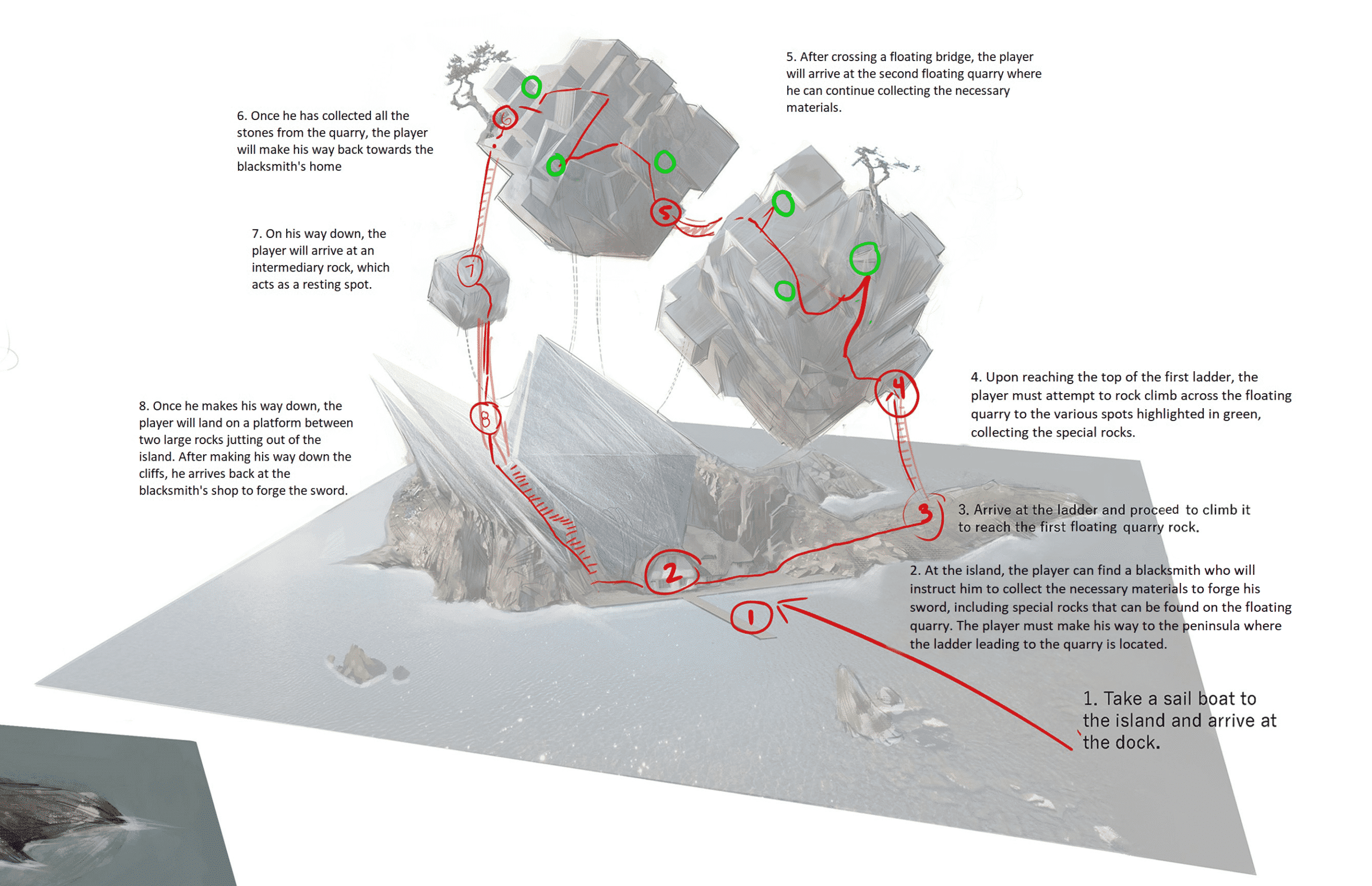
Narrative for the knight and the floating quarry isle
“This project was mostly an experiment for me to try and push an idea as far as I could, and I really enjoyed the whole process. It was very satisfying rendering the final artwork,” Jessica shared.
Advice for New Concept Artists
Stressing again the importance of keeping an open mind, Jessica highlighted that taking a wide range of projects is a great way to learn and improve as a new concept artist. “Don’t limit yourself by taking on only one type of task. Trying your hand at environments or prop design projects could end up helping you design better characters, vice versa,” she said.
At Virtuos Montreal, the team regularly conducts critique sessions to toss different ideas around, Jessica mentioned, adding that such sessions enable them to pick up new tips and learn from one another. “None of the critiques is personal. We’re all trying to improve our skills and produce the best work we can, so we enjoy the process and take the comments objectively,” further sharing how the group sessions have helped her grow as an artist.
“It’s a great opportunity being able to work alongside passionate artists with a variety of strengths at Virtuos Montreal. Being immersed in such an environment has allowed me to develop myself as a concept artist, especially when working with a team with an awesome attitude,” Jessica said.
If you’re looking to work in an exciting environment that encourages your personal artistic growth, Virtuos Montreal is definitely the place to be!

